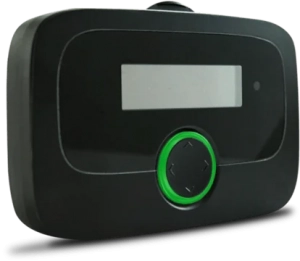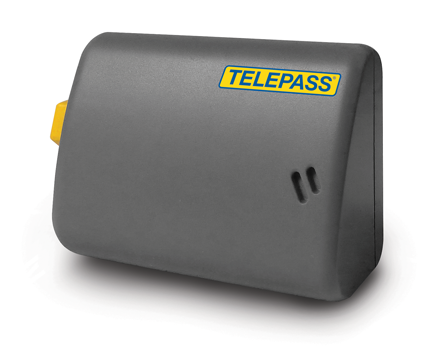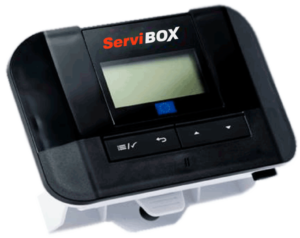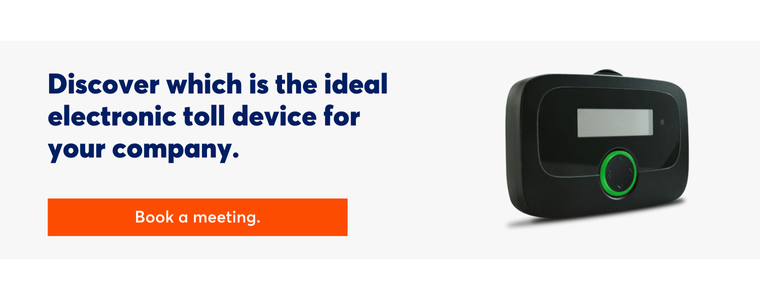In this article we comprehensively address everything about the electronic toll device. We invite you to learn what it is, where it is used and what its main advantages are.
What is electronic tolling?
Electronic tolls are an electronic payment method, which works by radio frequency or satellite, and allows vehicles to pay tolls automatically, without the need to brake or use cash.
The system is made up of two main elements: a device, which is placed in the vehicles and a reader antenna that is located at the different payment points. These can be squares with barriers, arches or adopt other modalities.
In general, there is an exclusive lane located to the right or left of the tolls, identified by a sign, which is the one that must be used to make the payment by electronic toll.
Where can you use an electronic toll system?
Electronic tolling is currently available in all European countries. However, there are differences. Vehicles for private use, such as cars and motorcycles, must have the vignette of the service network that is in force in their country. For example, in Spain the Via-T system is used, which also extends to France, Portugal and Italy. For other geographies, the driver will need to identify the specific provider.For professional transport, on the other hand, there are devices that allow you to concentrate all your payments made on international routes. This way, they need a single appliance and receive the charges on a single invoice. In addition, the contract usually includes other benefits such as discounts or facilities to process the tax refund.
How an electronic toll device works
The operation of the electronic toll device is simple and only requires installing the electronic device in the truck to start operating with the system.
From this, all lanes that have the electronic toll signal include an antenna with a microwave transmission system that is responsible for reading the data.
After reading the data, the cost of the toll or parking is charged to the current account associated with the electronic system that supports the car.
It is important to consider that the speed for an adequate reading of the electronic toll system must range between 20 and 40 km/h. Otherwise, the amount may not be charged due to the inability to read the data.
Types of electronic toll devices
Currently, different types of devices are marketed, each with its own particular characteristics and functionalities. The choice will depend on the size of the fleet, the routes and the needs of the company. For example, a company with a staff of drivers of different nationalities will require multilingual devices and attention. On the other hand, another that only transports goods through Spain and France with national drivers will be able to opt for a solution with fewer features.At Andamur we provide solutions adapted to each client so that transit on European routes is dynamic, safe and with competitive prices.
We offer simple and easy-to-install devices, optimising fleet control and management, simplifying invoicing by receiving a single periodic payment and having the possibility of recovering VAT on expenses in Europe.
Currently, we offer our customers three toll devices: Toll4Europe, ServiBOX and EU Interoperable. Let’s see its characteristics and possibilities.

Toll4Europe
- Travel non-stop through 14 countries in Europe.
- A total of 16 toll services: Spain, Portugal, France, Italy, Austria, Poland, Denmark Storebælt Bridge, Sweden Øresund Bridge, Germany, Germany Warnowquerung Tunnel, Germany Herrentunnel Tunnel, Bulgaria, Switzerland, Belgium, Belgium Liefkenshoek Tunnel, Slovakia and Hungary.
- Ability to activate and deactivate countries at no additional cost.
- France discounts with subscription are optional and individual for each device.
- Activation and deactivation of services within 24/48 hours of the request.
- Change of enrolment allowed and processed between 24 and 48 hours.
- Device blocking allowed per customer or per device with a time frame between 24 and 48 for processing.
- Available in 22 languages.
- A free informative app is available.Standard delivery time between 3 and 5 days.
- Easy installation.
ServiBox
- Advanced device.
- Maximum safety and control over the fleet through its exclusive KMASTER management system.
- Suitable for 11 countries in Europe (Spain, France, Portugal, Belgium, Belgian Tunnel, Belgium, Italy, Austria, A4 Poland (Katowice-Krakow), Norway, Denmark, Sweden and Germany). The countries are bad, we also had to mention the countries and services as in the case of Toll4Europe. ServiBOX is suitable for 13 countries and has 15 services.Available in 14 languages.
- It manages and controls consumption, offers the possibility of changing license plates and allows you to keep up to date with services from any mobile device.
- Easy to activate and deactivate in different countries at no additional cost.
- Very simple installation without the need for prior configuration.
- Easy and intuitive.
- No deposit required.
- Estimated delivery time of 5 business days.

Interoperable EU
- Easy installation with radio frequency technology.
- Available for Spain, Portugal, France, Italy, Poland (A4), Austria and the Belgian Tunnel. More than 21,000 kilometres across Europe.
- Estimated delivery time of 5 business days.
How to install and activate an electronic toll device
The device is installed in the cab of the truck, in the area indicated by each manufacturer, which is enabled for the placement of this type of system. It usually needs to be installed on a stand first, and then the power supply secured.
Once installed, the initial configuration proceeds. Depending on the type of device, requirements may change. But it is always recommended to provide basic data such as the weight of the truck and the number of axles. The axes are always mandatory in the 3 devices, this is a very delicate issue, the installation of the axes, which generates many incidents,
In addition, it is important to notify in advance which toll services will be required, anticipating the routes that will be taken. When entering a new country, it must be corroborated that all the necessary data has been entered.
Tips for the correct maintenance of the electronic toll device
It is important to control and maintain the use of the electronic toll device; for this reason, we recommend that:
- Check regularly that it’s installed correctly and in good condition.
- You have a balance in your bank account associated with the system to avoid payment problems.
- Do not expose the device to high temperatures or shocks that could damage it.
- Update it with the latest versions of the manufacturer’s software so that it works properly.
Advantages of electronic toll devices
Electronic toll devices have become a great ally for those who consider the road as a second home.
Trucks must take advantage of this system as it speeds up payments automatically, avoiding time losses and optimising fleet routes.
It is also an optimal way to control the costs linked to toll roads and organised access to tax discounts where appropriate, such as VAT.
Where to contract an electronic toll system?
At Andamur we have different solutions for the automatic payment of tolls that adapt perfectly to the needs of your company and your fleet of trucks.
Our electronic toll devices work on the main European motorways and, thanks to satellite and radio frequency technologies, you can make payments without having to stop the vehicle.
Thanks to this, and the fact that they are simple and easy to install devices, you will be able to optimise the control and management of your fleet, simplifying invoicing and VAT recovery.
With our most advanced device, Toll4Europe, you can enjoy maximum security and control over your fleet through its exclusive management system.



